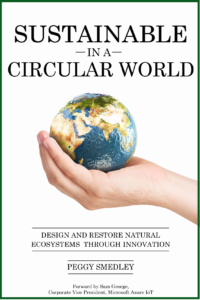If we want to be honest about what is coming next, AI (artificial intelligence) will impact nearly every vertical market, okay every market, every workload. In fact, Gartner places generative AI on the peak of inflated expectations on the 2023 hype cycle for emerging technologies, anticipating it will reach transformational benefit within two-to-five years. From the rate of change at this point, I think that gap is too wide. I see innovation even sooner.
But there is more to consider. It’s not just AI. Now, we need to envision how edge, cloud, IoT (Internet of Thing), digital twin, digital transformation, and other emerging technologies will enable this new tomorrow to come to fruition, giving developers the tools they need to bring great innovation to market.
We are beginning to see how this might all come together from the news coming out of last week’s Intel Innovation 2023, which promises it will empower developers to bring AI everywhere. In an interview the week before the event, executives told the press they have a clear roadmap where they are continuing to advance technology and continuing to innovate. It seems that vision is clear. Let’s break it down a bit.
Intel made some rather large announcements last week, including confirming its five-nodes-in-four-years process technology plan remains on track. The company also demonstrated a multi-chiplet packing using UCIe (Universal Chiplet Interconnect Express) interconnects. We also saw new details on the next-generation Intel Xeon processors, which include major advances in power efficiency and performance, and an E-core processor with 288 cores. 5th Gen Intel Xeon processors will launch December 14.
With a focus on artificial intelligence, the AI PC arrives with the launch of Intel Core Ultra processors on December 14 as well. With Intel’s integrated neural processing unit, Core Ultra will deliver power-efficient AI acceleration and local inference on the PC. A large AI supercomputer will be built on Intel Xeon processors and Intel Gaudi2 AI hardware accelerators, with Stability AI as the anchor customer.
What Developers Want and Need
We know developers are eager to harness AI, but face challenges that impede widespread deployment of solutions for client and edge to data center and cloud. We also know the global edge computing market size is expected to grow roughly 15.7% from 2023 to 2028, according to MarketsandMarkets.
In that press call, executives explained that it is important to remember that when we consider edge to be an evolution of the cloud, it is important to consider that each of them operates differently. Edge is challenged by limited compute. It has power constraints. At the same time, it generates an immense amount of valuable data that needs to be consumed in realtime to provide meaningful insights.
Intel is committed to addressing these challenges with a broad software-defined, silicon-accelerated approach that is grounded in openness, choice, trust, and security. OpenVINO is Intel’s AI inferencing and deployment runtime of choice for developers on client and edge platforms. The release includes pre-trained models optimized for integration across operating systems and different cloud solutions, including many generative AI models, such as the Llama 2 model from Meta.
Looking to the future, we can take a closer look at Project Strata and the development of an edge-native software platform, which will launch in 2024 with modular building blocks, premium service, and support offerings. It is a horizontal approach to scaling the needed infrastructure for the intelligent edge and hybrid AI.
Want to tweet about this article? Use hashtags #IoT #sustainability #AI #5G #cloud #edge #futureofwork #digitaltransformation #green #ecosystem #environmental #circularworld #developer


